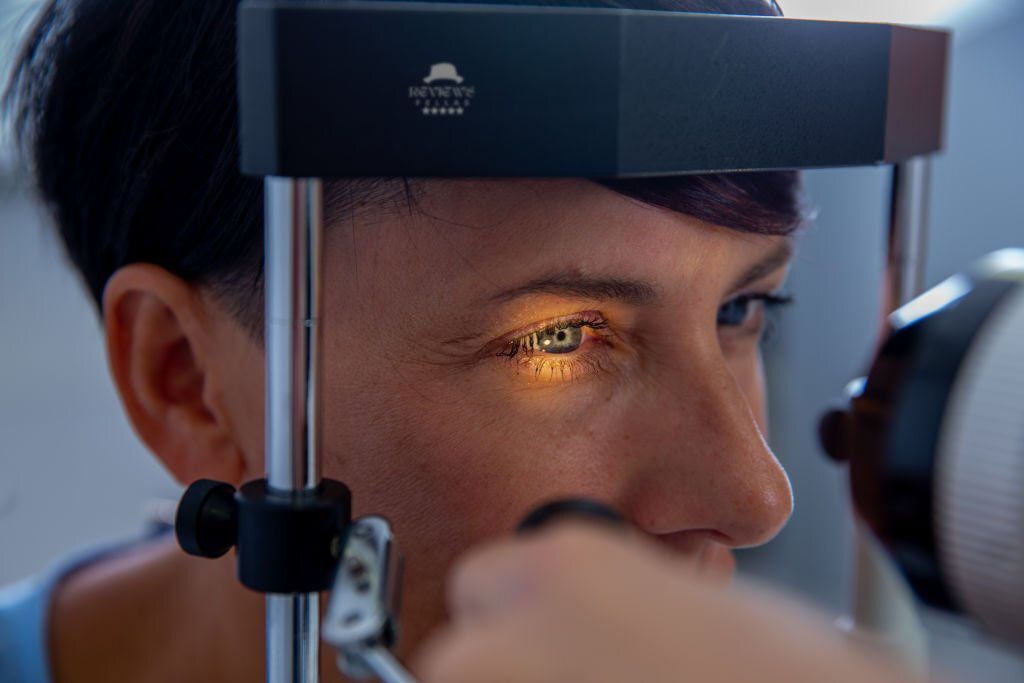This article is reviewed, corrected, and approved by: Dr. Joshua Collins M.D. | MRCP। FRCP
Glaucoma, a condition affecting the eyes, can interfere with the optic nerve's ability to transmit visual information to the brain. This vital nerve bundle plays a crucial role in delivering visual data to the brain. Without timely treatment, glaucoma can potentially cause harm to the optic nerve and lead to vision impairment.
Assessing the stage of glaucoma is an essential tool for healthcare providers in effectively managing the condition. By understanding the severity of glaucoma, doctors can develop a personalized treatment plan to halt or minimize any further harm to the eyes. It is important to stay proactive in monitoring and treating glaucoma to preserve your vision.
What is Glaucoma Staging?
Glaucoma staging involves categorizing the extent of glaucoma by assessing the level of harm inflicted on the optic nerve. The staging system is used to help doctors determine the best course of treatment for each patient.
Why is Glaucoma Staging Important?
Glaucoma staging is important to determine the severity of the disease and to guide treatment decisions.
- Examine and help select the best treatment option for each individual's needs.
- Track the progression of glaucoma over time.
- Compare the results of different treatment options.
What Are the Stages of Glaucoma?
It is essential to stage glaucoma accurately to determine the right treatment and billing procedures. While Medicare outlines three stages, clinical decisions should be based on data from significant trials. Here are the stages of glaucoma damage are as follows:
- Stage 0- No damage
- Stage 1- Early damage
- Stage 2- Moderate harm
- Stage 3- Advanced stage of injury
- Stage 4- End-stage glaucoma.
- Early/mild stage: At this stage, the optic nerve shows abnormalities, and there are noticeable alterations in the retinal nerve fiber layer.
- Moderate-stage: When glaucoma is at a moderate stage, there are problems with vision in one half of the field of view.
- Advanced/severe stage: Changes in the layers of the optic nerve and retinal nerve fibers, visual field anomalies in both hemifields, or even vision loss close to where you are looking are all signs of the severe stage.
How Glaucoma Staging is Determined?

Some tests that determine and help to identify glaucoma stage
- Intraocular pressure (IOP)
- Standard automated perimetry (SAP)
- Modern spectral-domain optical coherence tomography or SD-OCT
- ONH or Optic nerve head examination
The Benefits of Glaucoma Staging
Glaucoma staging offers several benefits in the management of the disease. Here are some key advantages of the glaucoma stage
Early Detection and Intervention
Glaucoma staging allows for the early detection of the disease, even before noticeable symptoms occur. Early detection of glaucoma can help slow down the progression or spreading of the disease and maintain vision through timely interventions.
Customize Treatment Planning
Every stage of glaucoma demands a specific treatment. For example, depending on the severity of glaucoma, eye care professionals need to tailor their therapy plans. Thus, if it is staged correctly, doctors will be able to give patients interventions appropriate for their particular stage; this increases both treatment success and longevity of vision.
Disease Monitoring
Glaucoma stage provides a baseline for tracking disease progression over time. Regular evaluations and staging assessments help ophthalmologists monitor changes in optic nerve damage, visual field loss, and other factors. This enables them to adjust treatment strategies as needed and make informed decisions regarding the management of the disease.
Evaluation of Treatment Effectiveness
Doctors use a method called "staging glaucoma" to see how well treatments are working for patients with glaucoma. By comparing staging results over time, eye care professionals can evaluate the impact of the implemented interventions and make adjustments if necessary. This helps make sure patients get the best treatment for their condition.
Prognostic Information
Glaucoma staging offers valuable prognostic information. It helps predict the potential course of the disease, estimating the likelihood of future vision loss and the speed at which it may occur.
Patient Education and Empowerment
Staging glaucoma helps patients understand their condition, leading to better adherence to treatment plans and proactive measures for eye health. Patients' Empowerment is important to participate in their own care and make rational decisions.
The benefits of the glaucoma stage include:
- Each patient's treatment course is determined by this test.
- It can assist physicians in tracking the disease's course over time.
- It can help doctors to compare the results of different treatment options.
Finally, glaucoma staging offers numerous benefits by facilitating early detection, individualized treatment planning, disease monitoring, evaluation of treatment effectiveness, prognostic information, and patient knowledge.
Frequently Asked Questions (FAQs)
Q: What is the primary sign of glaucoma?
Ans: The first symptom of glaucoma could be peripheral vision loss and other symptoms like blurred vision and eye pain. Regular eye exams can catch it early.
Q: What is the reason behind glaucoma?
Ans: Glaucoma is caused by elevated intraocular pressure, which damages the ganglion cell axons at the lamina cribrosa. Two theories suggest that this occurs through either mechanical compression or decreased vascularization in the area.
Q: What are the differences between glaucoma vs cataract?
Ans: Glaucoma damages the optic nerve, causing vision loss. It usually does not show symptoms until severe harm has occurred. Risk factors include age and medical conditions.
On the other hand, Cataract causes cloudy vision. Symptoms include blurry vision and difficulty seeing at night. Treatment for both involves surgery.
Q: What is glaucoma icd 10?
Ans: ICD-10 code H40 is used for glaucoma, with subcategories indicating type and severity. Common subcategories include:
- H40.00: Preglaucoma, unspecified
- H40.01: Primary open-angle glaucoma
- H40.02: Primary angle-closure glaucoma
- H40.03: Secondary glaucoma
- H40.04: Steroid responder
- H40.05: Ocular hypertension
Conclusion
Glaucoma is a condition that worsens gradually and can lead to permanent damage to the optic nerve, eventually causing vision loss. It is important to diagnose and assess the severity of the disease early on. By using glaucoma staging, specialists can make important decisions that can improve the overall outlook for the patient.
Knowing your stage of glaucoma is crucial after receiving a diagnosis and treatment. Working closely with a glaucoma specialist can help create a personalized treatment plan that meets the individual needs of the patient. Remember, early detection and proper management are key to preserving your vision.


